Master Plan by Chad Wright
Californian designer Chad Wright has made a sandcastle mould of a typical American house to recreate post-war suburbia on the beach (+ slideshow).
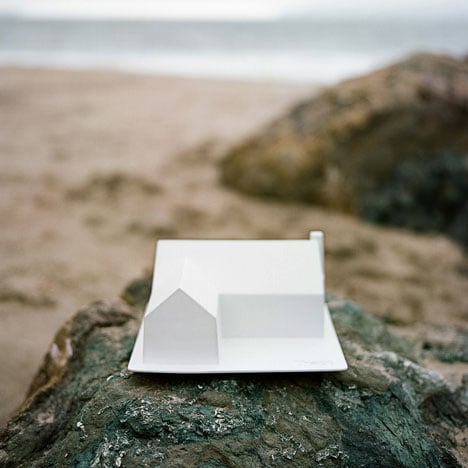
In this first of a three part series investigating the vision and legacy of suburbia using objects from Wright's childhood, Master Plan examines the symbolism of the mass-produced tract house.
"I am conflating a child’s sandcastle with architecture typifying post-war American suburbia," he says. "As children, my big brother Christopher and I would build cities in the sand."
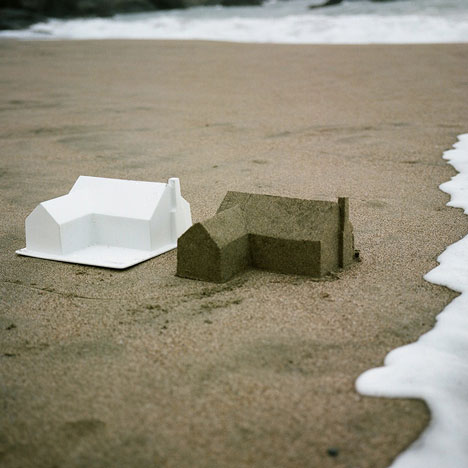
Wright was raised in a tract house: part of an urban development typology where multiple similar homes are built on a tract of land, which is subdivided into individual small lots.
The idea was first used in the Long Island community of Levittown in 1947 and Wright describes it as "a symbol for the model American Dream".
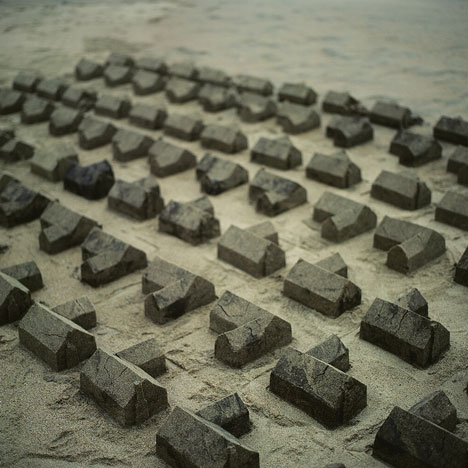
For this project he created a plastic mould that could be filled with sand and lifted off to reveal simplfied L-shaped bungalow forms, complete with chimney breasts.
Rows of these sand sculptures were constructed on a beach to mimic layouts of sprawling communities across the US.
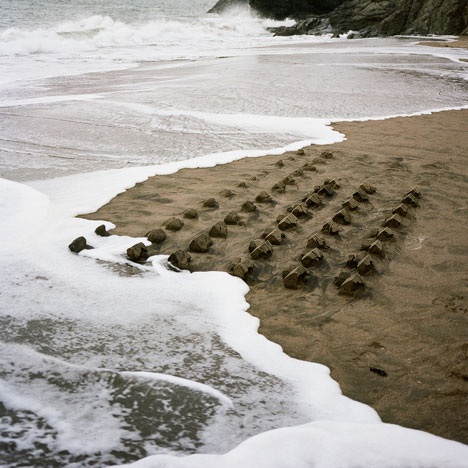
As the tide came in the sandcastles were slowly eroded by the waves, leaving them cracked, crumbling and unrecognisable as homes.
The designer formed Studio Chad Wright in 2011 and has also come up with a series of skyscraper birdhouses. Photography is by Lynn Kloythanomsup of Architectural Black.
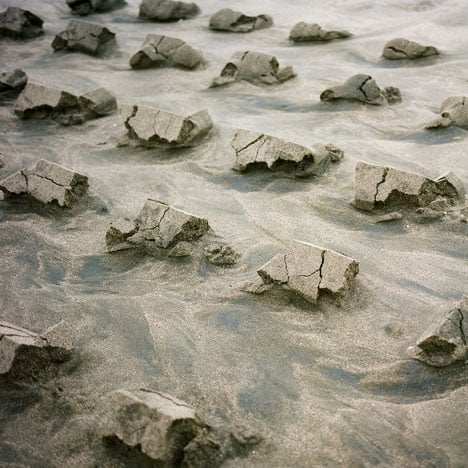
Other stories we've written about sand include a tractor that rolls patterns of stars into the beach and a machine that uses sunlight to make glass objects in the desert.
See more architecture and design with sand »
Wright sent us the following text:
Master Plan
I was raised in Orange County—a sprawling suburb of Southern California built by disciples of Levittown. We lived in a tract house, a symbol of the American Dream, just like our neighbors. Dad, a realtor, and mom, a preschool teacher, met while working at JCPenneys in 1970. We spent our summers in Breezy Point, New York, at the yellow beach bungalow that my grandma Stella bought with war bonds, unknown to grandpa who was stationed in Iwo Jima soon after they eloped. As children, my big brother Christopher and I would build cities in the sand, beneath the bungalow’s slatted porch floorboards.
In a series titled Master Plan, I am conflating a child’s sandcastle with architecture typifying postwar American suburbia. This three-part series culls artifacts from my childhood, investigating suburbia in its vision and legacy. Phase One focuses on the mass-produced tract house, re-examining it as symbol for the model American Dream.
A native Californian, Wright worked at several of San Francisco’s leading design studios before striking out on his own, creating Studio Chad Wright in 2011. Whether designing furniture or objects or creating conceptual installations, the studio’s goal is to synthesize ideas with objects, poetics with relevance, and product with person. Other recent work by Chad Wright is the Twig chair, produced by Council and Attic, a series of skyscraper birdhouses produced under his own label. Wright recently exhibited at SaloneSatellite in 2013.